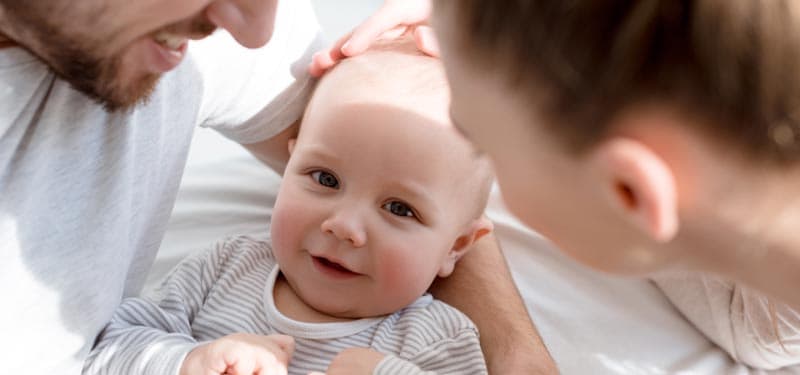From the moment we’re born, we rely on the care and support of those around us. The bonds we form with our earliest caregivers set the stage for a lifetime of relationships, shaping the way we connect with others and navigate the world.
These patterns of behavior and emotion that we develop are known as attachment styles, and they play a crucial role in our emotional development and well-being.
Attachment styles influence how we form relationships, express our needs, and to those around us. It influences our relationships with partners, friends, and coworkers––and often plays a key role in how we parent. These patterns, formed early in life, guide our interactions and emotional responses in various ways.
When we develop a secure attachment style, we tend to approach relationships with a sense of trust, openness, and emotional resilience. We are better equipped to build healthy supportive connections that encourage personal growth and happiness.
On the other hand, insecure attachment styles can lead to challenges in relationships, such as difficulty with communication, trust, and emotional regulation.
So what exactly is attachment theory? How does it affect our lives from infancy to adulthood? And why is understanding our attachment style so important for building strong, nurturing relationships?
Share this Article:
Top Picks for You:
- The Four Attachment Styles: Secure, Avoidant, Ambivalent, and Disorganized
- Toxic Shame: What Is It & What to Do About It
- The Power of Trauma-Informed Care: Understanding What Happened to You
- Somatic Resilience: Overcoming Early Trauma (with Peter A. Levine, PhD)
- Neuroplasticity: Rewiring the Traumatized Brain
Table of Contents

What is Attachment and Why Does it Matter?
What is Attachment?
Imagine a baby reaching out for comfort. The way their caregiver responds shapes how that child will view relationships for years to come. This is attachment in action.
Attachment theory—first developed by psychologist John Bowlby and later expanded upon by researcher Mary Ainsworth—is a psychological framework that explains how our early experiences with caregivers shape our emotional development and future relationships.
At its core, attachment refers to the deep bond that forms between an infant and their primary caregiver, usually a parent. This bond serves as a secure base from which the child can explore the world.
Bowlby proposed that the quality of this early attachment depends on the caregiver’s ability to consistently respond to the infant’s needs with sensitivity, warmth, and attunement.
When caregivers consistently respond with love, understanding, and attunement to a child’s needs, the child typically develops secure attachment. They feel safe to explore the world, knowing they have a reliable “home base” to return to.
But life isn’t always perfect. Sometimes caregivers struggle to be emotionally available, provide consistent or responsive care, which can lead to insecure attachment patterns.
Mary Ainsworth demonstrated these patterns in her famous “Strange Situation” experiments, where she observed children’s reactions to separation and reunion with their caregivers.
These observations led to the categorization of four attachment styles:
- Secure: Children feel confident exploring, knowing their caregiver is a safe haven.
- Anxious: Children may become overly clingy or fear abandonment.
- Avoidant: Children might appear emotionally distant or self-reliant.
- Disorganized: Children may show conflicting behaviors, sometimes seeking closeness and other times rejecting care.
Why Does Attachment Matter?
Attachment is not just a theoretical concept; it has far-reaching implications for our emotional, social, and psychological well-being throughout life.
- Effects on Childhood Development: Attachment plays a critical role in shaping a child’s emotional, cognitive, and social development.
Securely attached children tend to have strong emotional regulation skills. They learn to express their feelings and needs clearly, and show empathy for others.
They tend to have a strong sense of security and trust, which allows them to take on new challenges with confidence.
- Adult Relationships: Our early attachment experiences lay the foundation for how we approach relationships throughout our lives.
Securely attached adults often enjoy more fulfilling and stable romantic partnerships and friendships. These relationships are characterized by open communication, emotional intimacy, and mutual trust. Secure attachment makes it easier to form close, supportive relationships while maintaining a healthy balance between independence and connection.
In contrast, adults with insecure attachment styles may face various challenges in their relationships. They may find emotional intimacy overwhelming, fear abandonment, or struggle to trust partners. These patterns can lead to conflict and instability in romantic partnerships and friendships.
- Parenting and Intergenerational Outcomes: Securely attached parents often mirror the nurturing bonds they experienced, providing sensitive and responsive care for their own children.
However, parents with insecure attachment adaptations may have difficulty providing consistent and attuned care, lacking a clear blueprint. This can perpetuate attachment disruptions across generations.
- Mental Health Outcomes: Research has shown a significant link between attachment styles and mental health outcomes. Secure attachment tends to result in a more positive self-image, higher self-esteem, and greater resilience in the face of stress and adversity—all of which are protective factors against mental health disorders.
Conversely, insecure attachment is linked to a higher risk for various mental health issues. For example, people with anxious or avoidant styles may be more prone to depression or anxiety.
Disorganized attachment, often resulting from early trauma or abuse, is associated with the highest risk of mental health challenges, including PTSD, or borderline personality disorder.
For therapists––this means that understanding attachment can be an incredibly effective tool for supporting clients with a range of personal and relationship challenges.
By providing a safe, supportive environment, therapists can create corrective emotional experiences that challenge insecure attachment patterns and promote healing and growth.
Additionally, understanding the ways that clients are likely to respond to challenges or stressors, based on their attachment style is valuable information for helping them navigate difficult issues or moments.

As you practice progressive muscle relaxation, you may find you become more attuned to the physical sensations of tension and relaxation in your body, making it easier to respond when your body feels overwhelmed by stress.
This technique can be particularly helpful before bedtime, as it can promote better sleep by helping you unwind and let go of the day’s tensions.
Promoting Secure Attachment
It’s important to recognize that attachment styles are not fixed. Our attachment is influenced by many relationships throughout our lives, and we can repair and repattern our attachment wounds to build stronger, more rewarding relationships with those closest to us.
Therapy can be a valuable tool for exploring early attachment experiences, processing unresolved trauma, and developing new patterns of relating.
If you feel that you would benefit from therapy, consider seeking out a therapist who is trained in attachment-based approaches, such as Emotionally Focused Therapy (EFT), Attachment-Focused EMDR, or the Dynamic Attachment Repatterning experience (DARe), developed by Dr. Diane Pooler Heller.
Remember, healing from attachment adaptations is a journey that requires consistency and patience. With self-awareness, self-compassion, and a commitment to growth, it is possible to cultivate the secure, loving bonds we all deserve.





Ready to Begin Your Healing Journey?
Browse on-demand courses and begin learning from top experts today!


